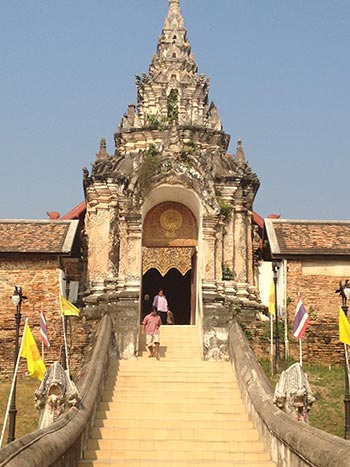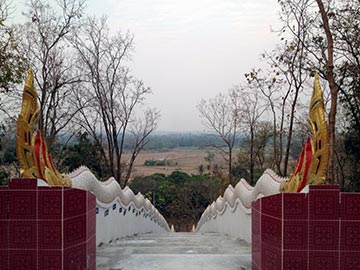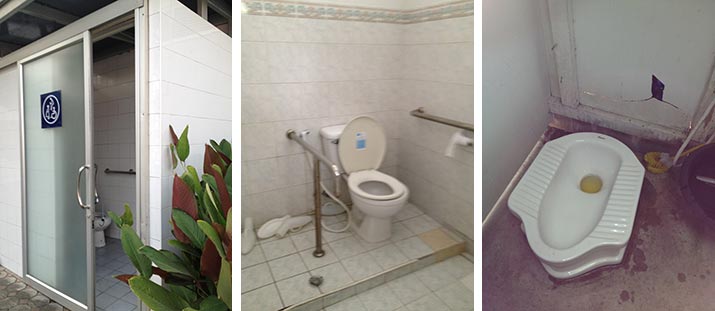
Entrance to Ban Lampang Luang – oldest Wat in Northern Province Thailand
Aging of the population is a phenomenon in the developing world as well as in the United States. Thailand’s population will comprise 20% elderly in the near future.
I had the opportunity, on my recent trip, to meet with a number of academics and leaders in both government and NGO sectors (Non Government Organizations or not for profit organizations, as we call them) interested in elder issues. Some felt that the family centered life and reverence of elder persons made this issue less of a priority. But there was an acknowledgement that changing life styles and economic life, creates more isolation and strain upon older people in their communities. Some passionate leaders are involved with interesting solutions.

Lampang Province Community Wat
Sadly, infrastructure issues in Thailand are a barrier to community life for those with mobility impairments. In my almost two weeks in Thailand, I saw very few wheel chairs, maybe two curb cuts (most curbs were so high that it hurt my knees!). Public transportation, except for the modern sky train in Bangkok, would be nearly impossible to use. Taxis are plentiful and very inexpensive for us, but considered a luxury to most in Thailand. The wats (temples), critical to community and spiritual life in a Buddhist society, are gorgeous and in every community, but with stairs that seem to reach the sky.
Toilets are typically squat toilets, that challenge any able bodied Westerner. Only 3-4 toilets I saw were accessible, one of which was in a neurological hospital. I add a couple pictures to illustrate the point.

(left) accessible restroom – highway rest stop, (middle) accessible toilet in neurological hospital, (right) typical squat toilet in Asia
Although there is so much still to do to improve the lives of older people in the U.S. and there is still much to do to equalize access for those with disabilities – we can be grateful for so many improvements of accessibility that we are usually take for granted. Thailand, along with the rest of the developing world, will need to face these infrastructure issues to cope with the aging in their societies.
Cyndee Wishkovsky
VP Aging Services

